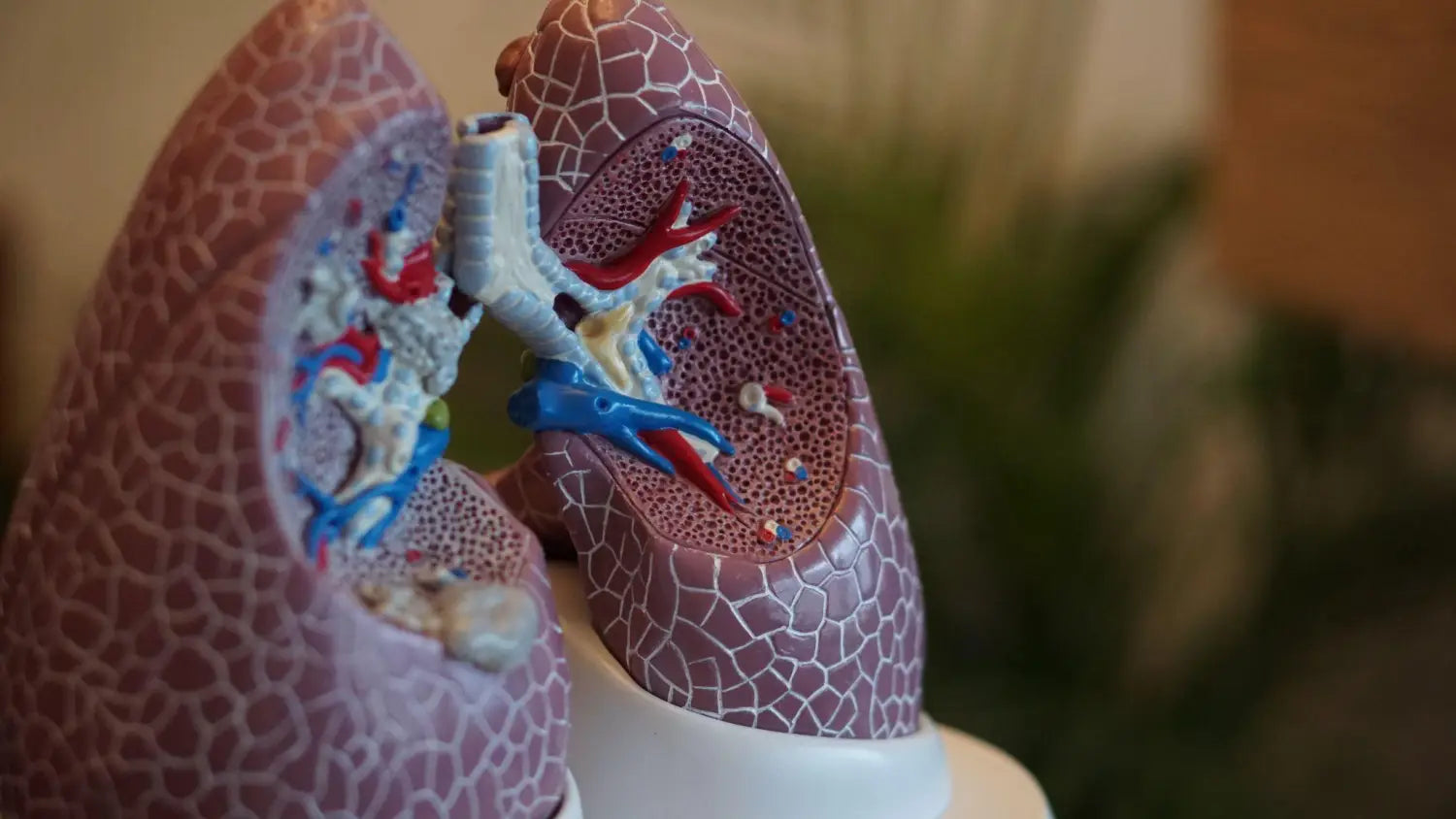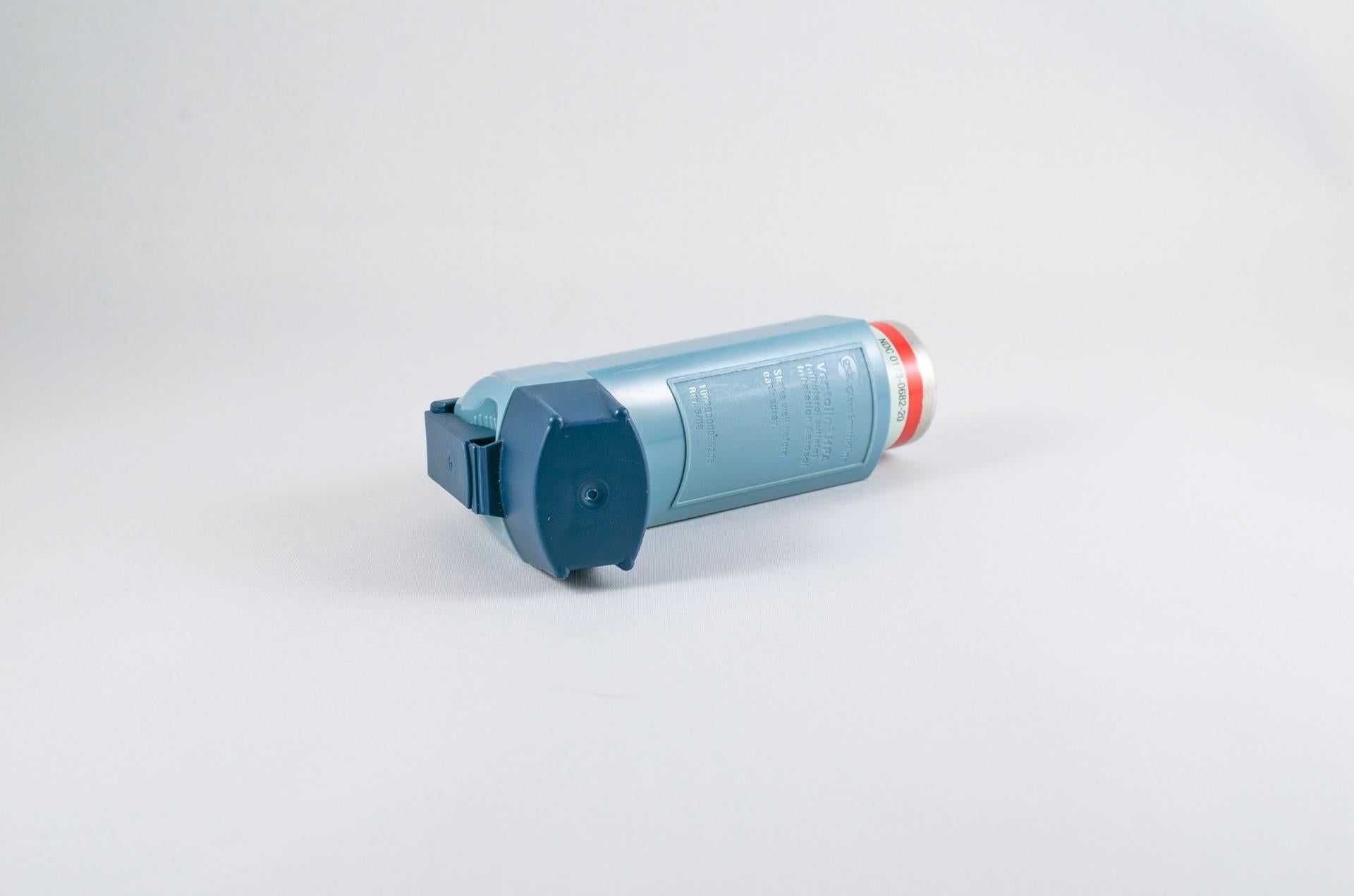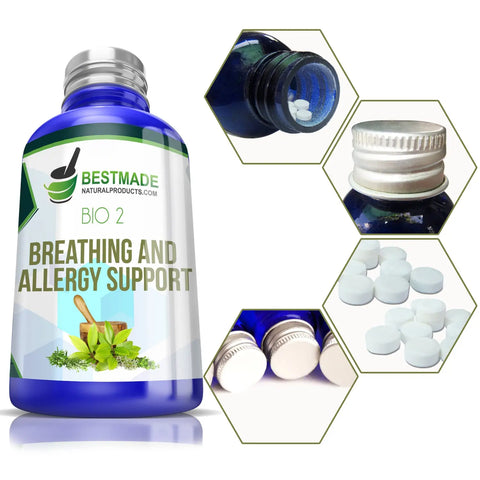Learn All About Asthma & How to Treat It
Asthma can be a serious medical condition in which your airways narrow or swell and may trigger the production of extra mucus. This is a problem because cells in our bodies need oxygen to function correctly. Lack of oxygen will have severe consequences for the body.
BIO6 is best used for coughing, painful respiration, and chest pain due to inflammation and mucus in the lungs. Also. It may help with head cold with congestion in the throat and sinus cavities.
For some, asthma is not a problem. Still, others experience it as a life-threatening problem while doing basic everyday activities.
Symptoms vary from mild to severe, but they can be controlled. Asthma cannot be cured, and it can change over time. The best option is to stay in touch with your doctor and adjust your treatments accordingly.
What is asthma?
It is a long-term medical condition, and it affects the airways. The main symptoms are inflammation and narrowing of the airways inside the lungs, resulting in reduced air supply.
A person with asthma may experience:
In the worst cases, swelling of airways could prevent oxygen from reaching the lungs and thus the bloodstream. A person with such symptoms should seek urgent medical attention.
The severity of symptoms from an asthma attack depends on your asthma type.
Types
Asthma usually occurs for the same reason; viruses, airborne pollutants, mold, pet dander cause your body to react and show symptoms.
These are some common types of asthma:
Asthma in children
Asthma can develop at any age, but it is the most common chronic condition that affects children.Children in the age group from 5 to 14 years are most likely to experience asthma. In 2017 the condition affected 9.7% of the population for the given age group.
According to the ALA (American Lung Association), common triggers of asthma in childhood are:
- Allergens
- Cold air exposure
- Stress
- Exercise
- Air pollutants
- Cigarette smoke and secondhand smoke
If a child is experiencing an attack, it is best to seek immediate medical attention and advice to manage the condition.
Sometimes, as children age, symptoms can become less severe or completely dormant. It is not always the case, as asthma can be a lifelong condition.

Adult-onset asthma
Asthma can also develop during adulthood. According to a 2013 study, symptoms are more likely to persist in adults than in children.Factors that increase the risk of developing asthma in adulthood:
Occupational asthma
People can develop asthma in the workplace. Depending on your workplace, health, and sensitivities, you can be at higher or lower risk.Workplaces where allergens may cause asthma due to allergies or sensitivities:
- Bakeries, kitchens
- flour mills
- Healthcare settings
- Zoos, pet shops, and laboratories where animals are present
- Farms and different agricultural settings
- Car repairs and manufacturing
- Engineering and metalwork
- Woodwork and carpentry
- Electronics and assembly industries
- Hairdressing salons
- Indoor swimming pools
Such work environments can also trigger a return of childhood asthma.
People who smoke, have a history of environmental allergies or asthma, and have allergic rhinitis are at a higher risk.
Difficult-to-control and severe asthma
Research shows that around 5 – 10% of people affected by asthma have an extreme variation.
Refractory asthma is a type that does not respond to treatment, no matter the dose. This type affects about 3.6% of people.
Eosinophilic asthma in severe cases also does not respond to usual medications; otherwise, it is manageable with standard asthma medications. Some people may benefit from "biologic" therapies. A type of biological medication can reduce the number of blood cells involved in an allergic reaction, called eosinophils.
Seasonal asthma
Asthma of this type is triggered by environmental factors depending on the time of the year. For example, spring or summer pollen, winter's cold air.
Seasonal asthma is not gone during the rest of the year, but no environmental factors are present to cause a flare-up. Sometimes asthma can be caused by an allergy.
BIO2 is best used for shortness of breath and spasms of coughing. It may help reduce inflammation in the airways and mucus production.
Symptoms
Most common asthma symptoms include:
- Coughing, especially at night, when laughing, or during exercise
- Wheezing, whistling, or a squealing sound while breathing
- Tightness in the chest
- Shortness of breath
- Difficulty talking
- Anxiousness or panic
- Fatigue
If symptoms persist for some time or you are worried that it might be a sign of asthma, see your doctor.
Risk Factors
Factors that increase the chance of you developing asthma:
- Environmental influences before birth and during upbringing
- Do your parents have asthma, especially your mother
- Genes
- Your race
- Your sex. asthma is more common in boys, but it is more common in women later in life.
- Your job
- Other conditions like allergies, lung infections, or obesity

Treatment
Depending on the type of asthma, age and triggers, a doctor will recommend a treatment from one of three primary categories:- Quick-acting treatments
- Breathing exercises
- Medications for long-term asthma control
Breathing exercises
These exercises focus on training the lungs. Over time you can increase lung capacity and reduce the effect of severe symptoms.Quick-relief asthma treatments
As the name suggests, these medications are used in the event of an asthma attack or when some symptoms show. Providing relief and helping you breathe again.
Bronchodilators
Bronchodilators relax the tightened muscles around your airwaves within minutes. It can be taken as an inhaler (rescue) or nebulizer.
First aid asthma treatment
What to do when someone you know is having an asthma attack?
Tell them or help them sit upright and assist them in finding their inhaler or nebulizer.
If, after 20 minutes, symptoms do not stop, seek medical attention immediately as the second round of medication will not help.
If you find yourself using quick-relief medications often, consult your doctor.
Long-term asthma control medications
These medications are taken daily. They help reduce the severity and the number of asthma symptoms. Still, they do not help with the immediate symptoms of an attack.Long-term medications include:
- Anti-inflammatories – help reduce mucus production and swelling
- Anticholinergics – help stop muscle tightening, usually combined with anti-inflammatories
- Biologic therapy drugs – injectable medications that could help with severe asthma

BM109 is best used for chronic lung disorders, coughing with or without mucus, breathlessness, wheezing, dyspnoea aggravated by exertion, frequent respiratory infections, headache, swollen ankles, feet, and legs.
Bronchial thermoplasty
A treatment that is not widely available is used to treat severe asthma. Airways inside the lungs are heated with an electrode which helps in muscle size reduction and tightening.
Exacerbations
Exacerbation is the progression of symptoms, but not for the better. If not prevented with prescribed medications, it becomes increasingly difficult to breathe.Symptoms may include:
- Wheezing
- Cough
- Hyperventilation
- Agitation
- Increased heart rate
Complications
You can make a big difference in preventing both long-term and short-term complications with proper treatment.Complications include:
- Permanent narrowing of bronchial tubes, these are tubes that carry oxygen (air) from and to your lungs
- Hospitalizations and emergency room visits for severe attacks
- Side effects from using long-term medications which are supposed to stabilize severe attacks
- Sick days from work or school
- Symptoms that interfere with work, sleep, and other activities
Living with asthma (prevention)
Since there is no way to prevent asthma, the best option would be to design a plan with your doctor to prevent or lessen the effect of an attack.- Learn about asthma and how does it work.
- Stick to the detailed plan you made with your doctor to manage asthma attacks and take medications. Stick to regular treatment and monitoring.
- Vaccinations for pneumonia and influenza can prevent flare-ups.
- Avoid asthma triggers by getting tested for allergens and irritants. Find out what causes your asthma symptoms and work on avoiding them.
- Learn to monitor your breathing, and with that, you could learn to recognize warning signs of an incoming attack.
- Treating and identifying attacks will make you less likely to have a life-threatening situation and use less medication for symptom control.
- Sticking to your medication and taking it as prescribed. Any plans for changing medications or doses should be shared with your doctor.
- If you use your inhaler often, your asthma could be out of control. See your doctor and adjust your treatment.

Natural Remedies for Asthma
Studies on natural asthma remedies have been limited, and it is not clear how effective or safe they are. Many things are credited as natural remedies; these have been studied:
Acupuncture – a traditional Chinese treatment where specific body points are penetrated by thin needles. Some asthma patients say that this treatment eases their symptoms, and there is some proof of efficacy in asthma treatment.
Biofeedback – learning to monitor and control your body is always a good thing. One of the main things you control is your heart rate to stay calm during an attack. Unfortunately, more scientific studies are needed to confirm the benefits.
Natural dietary supplements and herbs – vitamins C, D, and E could help lower the risk of symptoms flare-up. More research is needed on plants and herbs, even though many people use them, especially Chinese herbs.
Asthma diet – avoid foods that you are allergic to.
A well-rounded diet – some studies found benefits of the Mediterranean diet in people with asthma. This diet includes lots of vegetables, fruits, seeds, nuts, and fats like olive oil. Less red meat, more poultry, and fatty fish. Experts think that this helps because there are a lot of anti-oxidants in this diet, which reduces the inflammation in your body.
Weight loss – those extra pounds are usually found in the middle of the body. Putting additional pressure on your lungs makes them work even harder. Losing that weight could increase the volume of the lungs and reduce the chance of developing conditions that further complicate asthma (diabetes or high blood pressure).
Caffeine – a bonus for coffee and tea enjoyers. It acts as a mild bronchodilator, helping your airways open up. Studies have linked this benefit to people with asthma.
Yoga – controlled breathing, breathing exercises are helpful for asthma patients, and stress relief. Stress is a common asthma trigger.
Buteyko breathing – a technique that helps to improve your breathing pattern. Slow breathing and short periods of breath-holding can help to keep calm.
Papworth breathing method – a relaxation and breathing technique that teaches you to use your diaphragm for breathing and thus fill your lungs with as much oxygen as possible.
BM216 may help your body to deal with internal swelling and eases breathing.
Homeopathic medicine for asthma
According to the U.S. CDC, more than 26 million adults and children in the United States have asthma.
A 2012 National Health Interview Survey shows an estimated 1 million children and 5 million adults in the U. S. used homeopathy in 2011.
In homeopathic medicine, the treatment goal is to administer a minimal dose of a remedy that results in similar symptoms similar to the problem. That triggers the body's natural defense, and the mixture provides an energetic boost.
According to the National Institutes of Health, homeopathic treatments for asthma include:
- Aconitum napellus - shortness of breath
- Adrenalinum - congestion
- Aralia racemosa - tightness in the chest
- Bromium - spasmodic cough
- Eriodictyon californicum - asthmatic wheezing
- Eucalyptus globulus - mucus congestion
- Phosphorus - chest spasms
- Trifolium pratense – irritation
Conclusion
As a non-preventable, life-long condition, asthma could present a serious problem and have its patients struggling for a normal life. But thanks to today's medicine, you don't need to feel that way as symptoms can be regulated with medications and breathing exercises.
A good doctor with a plan can help you achieve what you strive for, but there needs to be discipline on your end! Sticking to prescribed medications, exercising, and avoiding asthma triggers in your environment.
So, make a few adjustments. If it is not working, try again and breathe!





Deixe um comentário